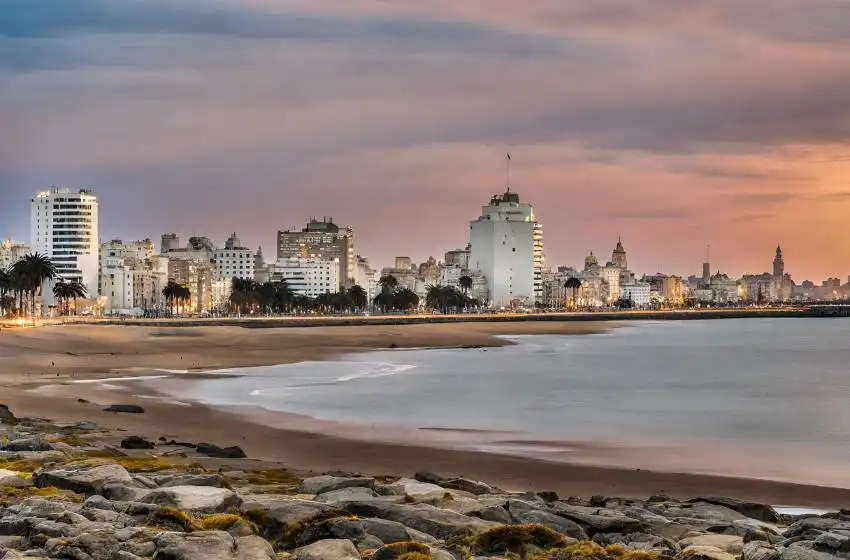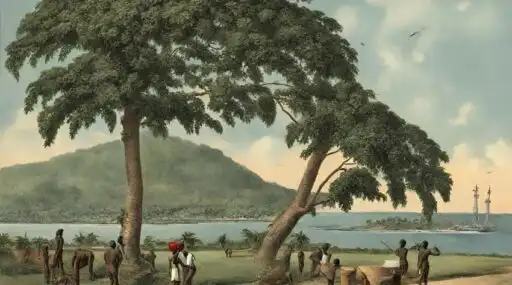Uruguay The 10 most touristically places, Uruguay, often described as South America’s hidden gem, is a country brimming with natural beauty, cultural heritage, and vibrant cities. From its pristine beaches to its historic towns, Uruguay offers travelers a diverse array of attractions and experiences to discover. In this guide, we’ll delve into the top 10 touristically renowned places in Uruguay, each offering a unique and unforgettable glimpse into the country’s enchanting landscapes, history, and culture.
Montevideo:
Colonial Elegance and Cosmopolitan Charm Montevideo, Uruguay’s capital and largest city, is a vibrant metropolis that blends colonial elegance with cosmopolitan charm. Founded in the early 18th century, Montevideo boasts a rich architectural heritage, with historic buildings, leafy boulevards, and bustling markets lining its streets. Visitors can explore the city’s historic center, Ciudad Vieja, which is home to iconic landmarks such as the Palacio Salvo, the Solís Theatre, and the Plaza Independencia, where they can visit the mausoleum of national hero José Artigas. Art and history enthusiasts will appreciate the city’s many museums and galleries, including the National Museum of Visual Arts and the Museo Torres García, which showcase Uruguay’s rich cultural heritage. Montevideo’s coastal promenade, La Rambla, offers panoramic views of the Rio de la Plata and is a popular spot for walking, jogging, and cycling, while the city’s vibrant nightlife scene comes alive with tango clubs, live music venues, and trendy bars and restaurants.
Punta del Este:
Playground of the Rich and Famous Punta del Este, often referred to as the “Saint-Tropez of South America,” is Uruguay’s premier beach resort destination, known for its glamorous beaches, upscale hotels, and vibrant nightlife. Located on a narrow peninsula jutting out into the Atlantic Ocean, Punta del Este attracts jet-setters, celebrities, and sun-seekers from around the world with its pristine beaches, turquoise waters, and luxurious amenities. Playa Brava and Playa Mansa are among the region’s most famous beaches, offering golden sands, gentle waves, and stunning sunsets, while the iconic La Mano sculpture—a giant hand emerging from the sand—is a must-see landmark. In addition to its beaches, Punta del Este boasts a thriving arts scene, with numerous galleries, museums, and public art installations showcasing contemporary and international artists. At night, the city comes alive with glamorous parties, exclusive clubs, and world-class restaurants, making Punta del Este a playground for the rich and famous and a must-visit destination for luxury travelers.
Colonia del Sacramento:
Timeless Beauty and Colonial Heritage Colonia del Sacramento, a UNESCO World Heritage Site, is a picturesque colonial town steeped in history and charm. Founded by the Portuguese in the late 17th century, Colonia del Sacramento is one of the oldest cities in Uruguay and boasts a well-preserved historic center that transports visitors back in time to the colonial era. Cobblestone streets, colorful buildings, and colonial-era churches dot the landscape, while the city’s historic fortifications, including the iconic Colonia del Sacramento Lighthouse and the Bastión del Carmen, offer panoramic views of the city and surrounding countryside. Visitors can explore the city’s many museums, galleries, and artisan shops, or simply wander through its charming streets, soaking in the atmosphere and admiring the architecture. For a truly unforgettable experience, travelers can take a sunset stroll along the city’s waterfront promenade, where they can watch the sun dip below the horizon and cast a golden glow over the Rio de la Plata.
Cabo Polonio:
Natural Beauty and Off-the-Grid Living Cabo Polonio is a remote and rugged coastal village located within Uruguay’s Cabo Polonio National Park, renowned for its pristine beaches, dramatic sand dunes, and off-the-grid lifestyle. Accessible only by foot, horseback, or 4×4 vehicle, Cabo Polonio offers travelers a unique opportunity to disconnect from the modern world and immerse themselves in the beauty of nature. The village is devoid of electricity, running water, and paved roads, giving it a rustic and otherworldly charm that attracts adventurers, nature lovers, and eco-conscious travelers. Visitors can explore the park’s sandy trails, climb the towering sand dunes for panoramic views of the coastline, or relax on the village’s secluded beaches, where they can swim, surf, or sunbathe in peace. Cabo Polonio is also home to a diverse array of wildlife, including sea lions, dolphins, and migratory birds, making it a paradise for wildlife enthusiasts and photographers.
Punta del Diablo:
Surfing Paradise and Bohemian Retreat Punta del Diablo is a laid-back beach town located on Uruguay’s Atlantic coast, renowned for its pristine beaches, world-class surf breaks, and bohemian atmosphere. Once a quiet fishing village, Punta del Diablo has emerged as a popular destination for surfers, backpackers, and artists seeking an authentic and off-the-beaten-path experience. Playa Grande and Playa del Rivero are among the region’s most famous beaches, offering consistent waves and stunning sunsets, while the village’s colorful streets are lined with artisan shops, beachfront bars, and seafood restaurants serving fresh-caught fish and local delicacies. Visitors can explore nearby attractions such as Santa Teresa National Park, where they can hike through lush forests, spot exotic wildlife, and visit historic forts and lighthouses, or take a boat trip to Isla de la Tuna, a nearby island known for its pristine beaches and crystal-clear waters.
Salto del Penitente:
Natural Wonder and Outdoor Adventure Salto del Penitente is a breathtaking waterfall and natural wonder located in the heart of Uruguay’s interior, near the town of Minas. Nestled within a lush forest reserve, Salto del Penitente offers visitors a tranquil retreat from the hustle and bustle of city life, with cascading waterfalls, crystal-clear pools, and scenic hiking trails that wind through the surrounding hills and valleys. The waterfall’s name, which translates to “Leap of the Penitent,” is derived from a local legend that tells of a repentant monk who leapt from the waterfall’s edge to atone for his sins. Today, visitors can hike to the waterfall’s base, where they can swim in the cool waters, picnic amidst the natural beauty, or simply relax and enjoy the serenity of the surroundings. Salto del Penitente is also a popular destination for outdoor activities such as horseback riding, mountain biking, and birdwatching, with opportunities to spot a variety of wildlife, including toucans, parrots, and monkeys.
La Paloma:
Seaside Serenity and Coastal Charm La Paloma is a charming seaside town located on Uruguay’s southeastern coast, renowned for its pristine beaches, laid-back atmosphere, and natural beauty. Surrounded by rolling hills, rocky cliffs, and sandy beaches, La Paloma offers travelers a tranquil retreat from the hustle and bustle of city life, with opportunities for swimming, surfing, and sunbathing on its unspoiled shores. Playa La Balconada and Playa Los Botes are among the region’s most popular beaches, offering gentle waves, golden sands, and stunning sunsets, while the town’s waterfront promenade is lined with quaint cafes, seafood restaurants, and artisan shops selling locally made crafts and souvenirs. For outdoor enthusiasts, La Paloma is a paradise for hiking, birdwatching, and wildlife spotting, with nearby attractions such as Cabo Santa Maria, a scenic headland that offers panoramic views of the coastline and surrounding countryside.
Tacuarembó:
Gaucho Culture and Rural Traditions Tacuarembó is a picturesque town located in the heart of Uruguay’s interior, renowned for its rich gaucho culture, rural traditions, and breathtaking landscapes. Known as the “Land of the Gauchos,” Tacuarembó is steeped in cowboy lore and boasts a proud tradition of horsemanship, cattle ranching, and folk music that is celebrated throughout the year with festivals, rodeos, and traditional dances. Visitors can explore the town’s many museums and cultural attractions, such as the Museo Carlos Gardel, which honors the legendary tango singer who was born in Tacuarembó, or take a scenic drive through the surrounding countryside, where they can admire rolling hills, verdant pastures, and estancias (ranches) that have been in the same families for generations. For a truly authentic experience, travelers can stay at a traditional gaucho estancia, where they can ride horses, participate in cattle roundups, and learn about the history and heritage of Uruguay’s legendary cowboys.
Carmelo:
Wine Country and Riverside Retreat Carmelo is a charming riverside town located in Uruguay’s Colonia Department, renowned for its scenic beauty, historic vineyards, and laid-back atmosphere. Nestled along the banks of the Rio de la Plata, Carmelo offers travelers a tranquil retreat from the hustle and bustle of city life, with tree-lined streets, colonial-era buildings, and picturesque plazas that evoke a sense of old-world charm. The region is also known for its thriving wine industry, with numerous vineyards and wineries dotting the countryside, where visitors can tour the cellars, sample the wines, and enjoy scenic views of the river and surrounding vineyards. In addition to wine tasting, Carmelo offers a variety of outdoor activities and attractions, including golfing at the prestigious Carmelo Golf Club, hiking and birdwatching in nearby nature reserves, or simply relaxing on the riverfront promenade, where travelers can watch boats sail by and soak in the beauty of the river.
Piriápolis:
Seaside Splendor and Belle Époque Elegance Piriápolis is a charming seaside resort town located on Uruguay’s southeastern coast, renowned for its pristine beaches, Belle Époque architecture, and scenic beauty. Founded in the early 20th century as Uruguay’s first beach resort, Piriápolis exudes an air of old-world elegance and sophistication, with grand hotels, palm-lined boulevards, and picturesque plazas that harken back to a bygone era. Visitors can stroll along the town’s iconic Rambla de los Argentinos, a waterfront promenade that offers stunning views of the coastline and surrounding hills, or relax on the town’s sandy beaches, where they can swim, sunbathe, or enjoy water sports such as windsurfing and sailing. For a taste of history and culture, travelers can visit iconic landmarks such as the Cerro San Antonio Hill, home to a historic castle and lighthouse, or the Argentino Hotel, a grand Belle Époque hotel that has hosted celebrities and dignitaries from around the world.
Conclusion:
Uruguay’s top tourist destinations offer travelers a diverse array of experiences, from exploring historic towns and relaxing on pristine beaches to immersing oneself in rural traditions and savoring local wines. Whether seeking adventure, relaxation, or cultural immersion, Uruguay captivates the imagination with its natural beauty, cultural richness, and warm hospitality. Each of these 10 destinations offers a unique and unforgettable experience, inviting travelers to discover the magic and wonder of this enchanting country. Whether exploring the cobblestone streets of Colonia del Sacramento, sunbathing on the sandy shores of Punta del Este, or horseback riding through the rolling hills of Tacuarembó, Uruguay beckons travelers to embark on an unforgettable journey of exploration and discovery.















































Leave a Reply